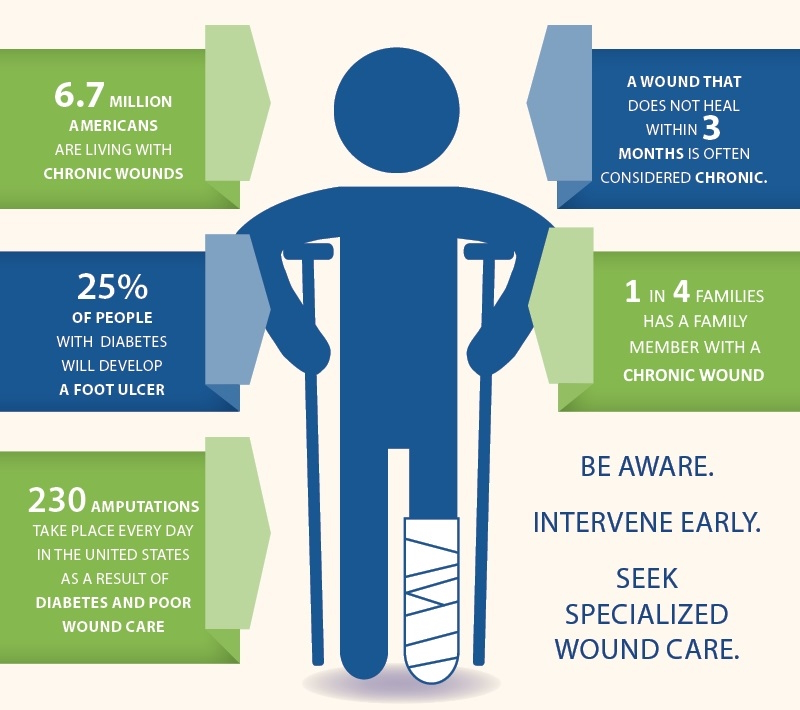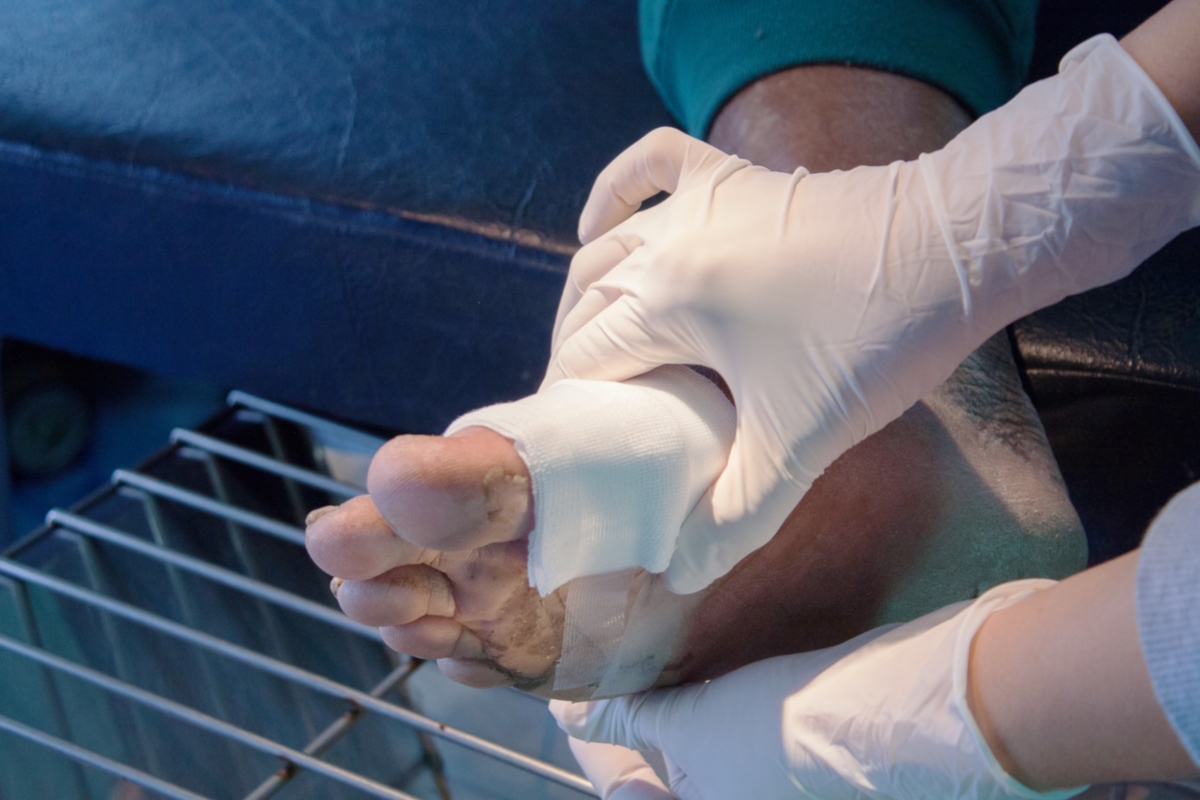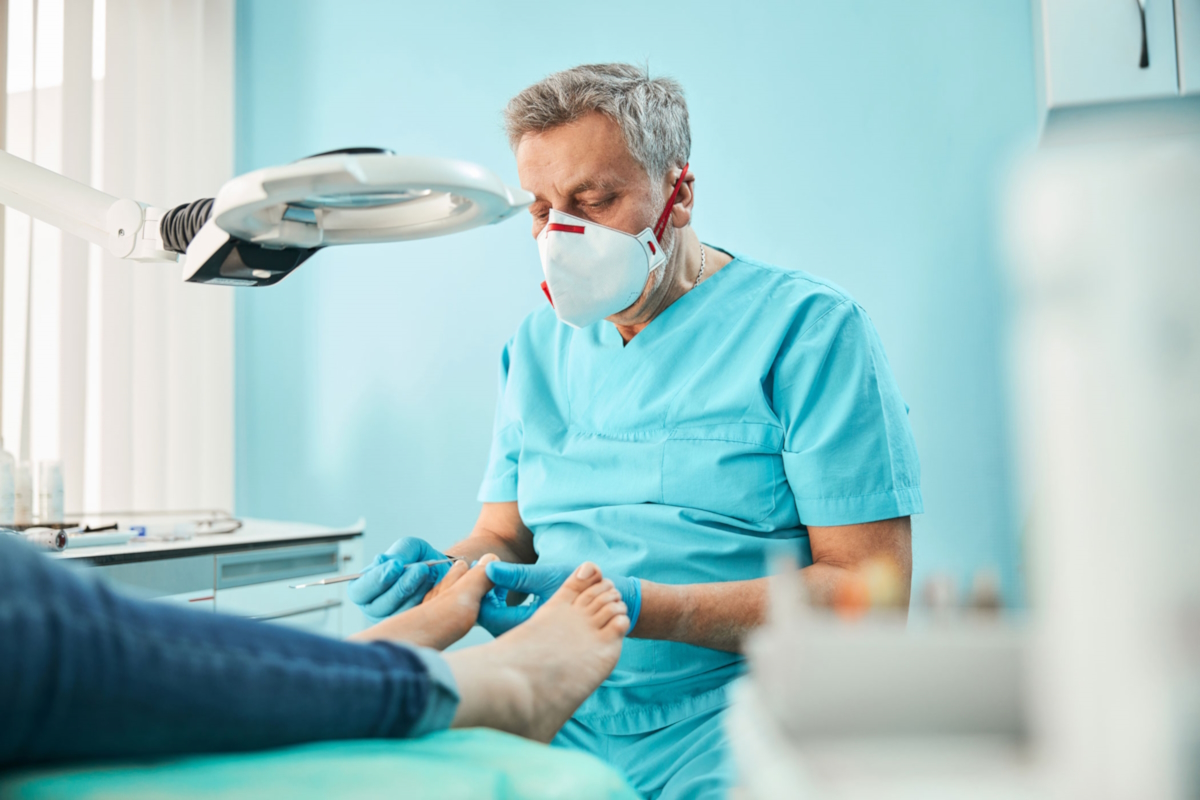Healing Insights: Navigating the Journey of Wound Care
Author: StrideCare Internal Team

Nick* is not the sort of person who likes to let others know about his injuries and illnesses. If he had it his way, he would suffer in silence and hope that with medications and a few Band-Aids, relief would not be too far away. When he experienced his first foot sore six months ago and realized traditional wound care methods were not working, he swallowed his pride and sought help from his podiatrist.
As it turned out, he had a diabetic foot ulcer. The good news was that it had not escalated too far and could be healed with specialized care. Fast forward to today, and Nick is happy, healthy, and a massive proponent of early intervention and wound care treatment.
Positive wound healing stories like this are more common than you think. During Wound Healing Awareness Month in June, our podiatrists want to bring heightened awareness to this important topic. If you have a chronic wound on your foot, there is hope that it can heal!
That said, not everyone’s journey through wound care is as expedient as Nick’s. The reality is that chronic wounds on the feet and legs affect 6.7 million patients annually and can linger for months and even years after the initial break in the skin. What appears to be a simple cut, scrape, or laceration might not heal as easily, no matter what remedies you try or how many trips to the doctor you make. Before you know it, the situation escalates from painful to life-altering. This is especially true for individuals who do not seek early intervention.
As a result, chronic wounds are currently one of the biggest burdens and challenges to the healthcare system, the podiatrists and wound care professionals who treat them, and patients who suffer from them.

Are You Living With These Symptoms of Feet Wounds?
- Drainage (bloody or pus-filled)
- Skin discoloration
- Rash and/or swelling on the legs
- Thickening or itchy skin
- Skin is cool or cold to the touch
- Scabbing or flaking skin
- Hair loss near the ulcer
- Varicose veins
Do you need expert wound care? Request an appointment with a StrideCare podiatrist today. Our collaborative approach ensures you receive the care you need.
Wound Care: What’s Considered a Chronic Wound?
Wound Healing Awareness Month—now in its ninth year—is celebrated each June to raise awareness for wound care and recognize the challenges experienced by individuals whose lives are affected daily by chronic wounds. What is considered a chronic wound? In the simplest terms, these are open, non-healing sores on a person’s legs or feet that do not show improvement within four weeks to three months.
There are many reasons why you may be experiencing chronic wounds on your lower extremities, especially your feet. For starters, wounds need oxygen to heal and promote healthy tissue regeneration. The best way to distribute oxygen to help with this is adequate blood delivery throughout the body. When you have circulatory issues, either because of damaged veins or clogged arteries, your blood can not transport cells to the injury. Other complications can cause poor wound healing, too, including complications from diabetes, infections, edema, insufficient nutrition, trauma, surgeries gone wrong, and even prolonged pressure from immobility or a sedentary lifestyle.
There are generally three types of chronic wounds that impact the feet and legs:
Diabetic ulcers
These foot ulcers are a common complication among patients with diabetes who are not managing their diet, exercise, and insulin treatments properly. The annual incidence of diabetic foot ulcers worldwide is between 9.1 to 26.1 million. Common symptoms of diabetic foot ulcers include irritated toes and feet, warmth around the wound, large open wounds on the big toes and balls of the feet, callused or thickened skin surrounding the ulcer, drainage, unusual odor from the feet, and stains on socks or insides of the shoes.
Venous ulcers
These are shallow, open sores found on the legs and feet, typically below the knees or on the inner side of the ankles. They are caused by damaged valves in the veins. As valves are damaged and weakened, blood begins to pool in the legs. Venous ulcers are characterized by scabbing or flaking skin, skin discoloration, leg pain that worsens when you stand, and thickening or itchy skin.
Arterial ulcers
Also called ischemic skin ulcers, these often form on the lower extremities due to lack of blood flow. They even share many of the same signs and symptoms as venous ulcers. While venous ulcers develop as a result of damaged valves in our veins, arterial skin ulcers are caused by blocked or clogged arteries. They also tend to form on the outer side of the ankles, feet, heels, and toes. With these, you might see tight, hairless patches of skin on the legs and ankles, red, yellow, or black sores with a punched-out appearance, and deeper wounds. Arterial ulcers can also be cool or cold to the touch.

Depending on the severity of the wound and your unique needs, it can be important to take a collaborative approach to wound care. This can include wound care specialists, podiatrists, and vascular specialists teaming together to address underlying conditions that caused the wound to begin with, improve blood flow, eliminate painful symptoms, address footwear concerns, and decrease the chance of life-altering limb loss.
The bottom line is that having all hands on deck is important to effectively manage wound care issues. In terms of wound care itself, we might employ the following treatment options to ensure optimal healing:
- Medication changes
- Regular cleanings for proper hygiene
- Tailored wound dressings
- Biological skin substitutions
- Debridements
- Oxygen therapy
- Use of compression stockings and bandages
Are you looking for relief from foot sores, ulcers or wounds? Schedule a consultation with StrideCare’s expert podiatric physicians.
Trust StrideCare With Your Wound Care Strategies
Anyone promoting Wound Healing Awareness Month will urge you to see a specialist if your wound is not showing signs of healing after two weeks or has not healed completely after six weeks. A thorough evaluation can be performed on the wound itself as well as asking more questions to better understand your medical history and how that may or may not be contributing to your acute or chronic wound.
In some cases, healing a wound could be as simple as a medication change. In complex situations, biological skin substitutes, debridements, and other methods may be needed. Your friends at StrideCare offer a multi-specialty care model for treating lower-extremity vascular and podiatric conditions. Our wound healing experts offer advanced solutions to treat and prevent open wounds, guard against infection, and get you back to enjoying life. Furthermore, our expert doctors and caring staff utilize the latest technologies and minimally invasive procedures to help our patients reclaim their lives.

As the largest multi-specialty network in Texas, StrideCare helps patients achieve improved quality of life from both common and complex conditions including diabetic vascular issues, peripheral arterial disease, venous insufficiency, foot neuropathy, varicose veins, diabetic foot ulcers, and wounds. The good news is that finding someone to help near your area is easier than ever with over 50 StrideCare clinic locations across the state of Texas. We are a Texas-based practice with each clinic locally managed.
At StrideCare, we are here to help, all while providing compassionate patient care. Please contact us at 866-552-4866 or complete the appointment form to schedule a consultation.
This information is not a substitute for professional medical advice. Prior to starting any new treatment or questions regarding a medical condition, always seek the advice of your doctor or other qualified health provider.
StrideCare serves North Texas and South Texas communities, including Houston, Irving, Katy, Kaufman, Mansfield, McKinney, Mesquite, Midland, North Dallas, Odessa, Paris, Pecos, Plano, Prosper, Rockwall, Round Rock, Rowlett, Royce City, San Antonio, Sherman, South Dallas, Southlake, Stone Oak, Sugar Land, Sulphur Springs, The Woodlands, Waxahachie, Webster, Addison, Allen, Anna, Arlington, Austin, Carrollton, Celina, Clear Lake, Craig Ranch, Dallas, Euless, Flower Mound, Forney, Fort Worth, Frisco, Garland and more.
*Patient names and/or photos may be changed to protect patient confidentiality.


